Tutorial: Microsoft Entra integration with SAML SSO for Confluence by resolution GmbH
In this tutorial, you'll learn how to integrate SAML SSO for Confluence by resolution GmbH with Microsoft Entra ID. When you integrate SAML SSO for Confluence by resolution GmbH with Microsoft Entra ID, you can:
- Control in Microsoft Entra ID who has access to SAML SSO for Confluence by resolution GmbH.
- Enable your users to be automatically signed-in to SAML SSO for Confluence by resolution GmbH with their Microsoft Entra accounts.
- Manage your accounts in one central location.
Prerequisites
To get started, you need the following items:
- A Microsoft Entra subscription. If you don't have a subscription, you can get a free account.
- SAML SSO for Confluence by resolution GmbH single sign-on (SSO) enabled subscription.
Scenario description
In this tutorial, you configure and test Microsoft Entra SSO in a test environment.
- SAML SSO for Confluence by resolution GmbH supports SP and IDP initiated SSO
Add SAML SSO for Confluence by resolution GmbH from the gallery
To configure the integration of SAML SSO for Confluence by resolution GmbH into Microsoft Entra ID, you need to add SAML SSO for Confluence by resolution GmbH from the gallery to your list of managed SaaS apps.
- Sign in to the Microsoft Entra admin center as at least a Cloud Application Administrator.
- Browse to Identity > Applications > Enterprise applications > New application.
- In the Add from the gallery section, type SAML SSO for Confluence by resolution GmbH in the search box.
- Select SAML SSO for Confluence by resolution GmbH from results panel and then add the app. Wait a few seconds while the app is added to your tenant.
Alternatively, you can also use the Enterprise App Configuration Wizard. In this wizard, you can add an application to your tenant, add users/groups to the app, assign roles, as well as walk through the SSO configuration as well. Learn more about Microsoft 365 wizards.
Configure and test Microsoft Entra SSO for SAML SSO for Confluence by resolution GmbH
Configure and test Microsoft Entra SSO with SAML SSO for Confluence by resolution GmbH using a test user called B.Simon. For SSO to work, you need to establish a link relationship between a Microsoft Entra user and the related user in SAML SSO for Confluence by resolution GmbH.
To configure and test Microsoft Entra SSO with SAML SSO for Confluence by resolution GmbH, perform the following steps:
- Configure Microsoft Entra SSO - to enable your users to use this feature.
- Create a Microsoft Entra test user - to test Microsoft Entra single sign-on with B.Simon.
- Assign the Microsoft Entra test user - to enable B.Simon to use Microsoft Entra single sign-on.
- Configure SAML SSO for Confluence by resolution GmbH SSO - to configure the Single Sign-On settings on application side.
- Create SAML SSO for Confluence by resolution GmbH test user - to have a counterpart of Britta Simon in SAML SSO for Confluence by resolution GmbH that is linked to the Microsoft Entra representation of user.
- Test SSO - to verify whether the configuration works.
Configure Microsoft Entra SSO
Follow these steps to enable Microsoft Entra SSO.
Sign in to the Microsoft Entra admin center as at least a Cloud Application Administrator.
Browse to Identity > Applications > Enterprise applications > SAML SSO for Confluence by resolution GmbH > Single sign-on.
On the Select a single sign-on method page, select SAML.
On the Set up single sign-on with SAML page, click the pencil icon for Basic SAML Configuration to edit the settings.

On the Basic SAML Configuration section, if you wish to configure the application in IDP initiated mode, enter the values for the following fields:
a. In the Identifier text box, type a URL using the following pattern:
https://<server-base-url>/plugins/servlet/samlssob. In the Reply URL text box, type a URL using the following pattern:
https://<server-base-url>/plugins/servlet/samlssoClick Set additional URLs and perform the following step if you wish to configure the application in SP initiated mode:
In the Sign-on URL text box, type a URL using the following pattern:
https://<server-base-url>/plugins/servlet/samlssoNote
These values are not real. Update these values with the actual Identifier, Reply URL and Sign-on URL. Contact SAML SSO for Confluence by resolution GmbH Client support team to get these values. You can also refer to the patterns shown in the Basic SAML Configuration section.
On the Set up Single Sign-On with SAML page, in the SAML Signing Certificate section, click Download to download the Federation Metadata XML from the given options as per your requirement and save it on your computer.

Create a Microsoft Entra test user
In this section, you'll create a test user called B.Simon.
- Sign in to the Microsoft Entra admin center as at least a User Administrator.
- Browse to Identity > Users > All users.
- Select New user > Create new user, at the top of the screen.
- In the User properties, follow these steps:
- In the Display name field, enter
B.Simon. - In the User principal name field, enter the username@companydomain.extension. For example,
B.Simon@contoso.com. - Select the Show password check box, and then write down the value that's displayed in the Password box.
- Select Review + create.
- In the Display name field, enter
- Select Create.
Assign the Microsoft Entra test user
In this section, you'll enable B.Simon to use single sign-on by granting access to SAML SSO for Confluence by resolution GmbH.
- Sign in to the Microsoft Entra admin center as at least a Cloud Application Administrator.
- Browse to Identity > Applications > Enterprise applications > SAML SSO for Confluence by resolution GmbH.
- In the app's overview page, select Users and groups.
- Select Add user/group, then select Users and groups in the Add Assignment dialog.
- In the Users and groups dialog, select B.Simon from the Users list, then click the Select button at the bottom of the screen.
- If you are expecting a role to be assigned to the users, you can select it from the Select a role dropdown. If no role has been set up for this app, you see "Default Access" role selected.
- In the Add Assignment dialog, click the Assign button.
Configure SAML SSO for Confluence by resolution GmbH SSO
In a different web browser window, log in to your SAML SSO for Confluence by resolution GmbH admin portal as an administrator.
Hover on cog and click the Add-ons.
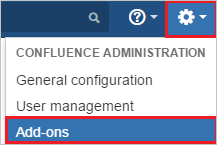
You are redirected to Administrator Access page. Enter the password and click Confirm button.
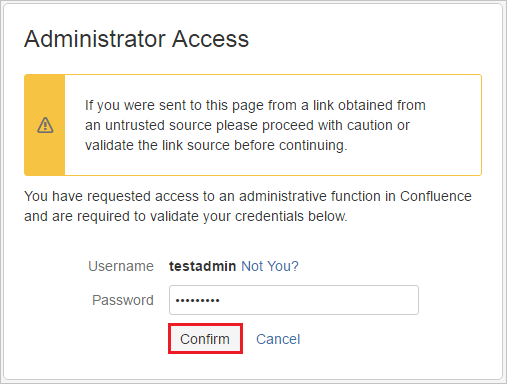
Under ATLASSIAN MARKETPLACE tab, click Find new add-ons.
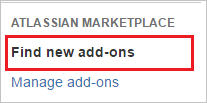
Search SAML Single Sign On (SSO) for Confluence and click Install button to install the new SAML plugin.
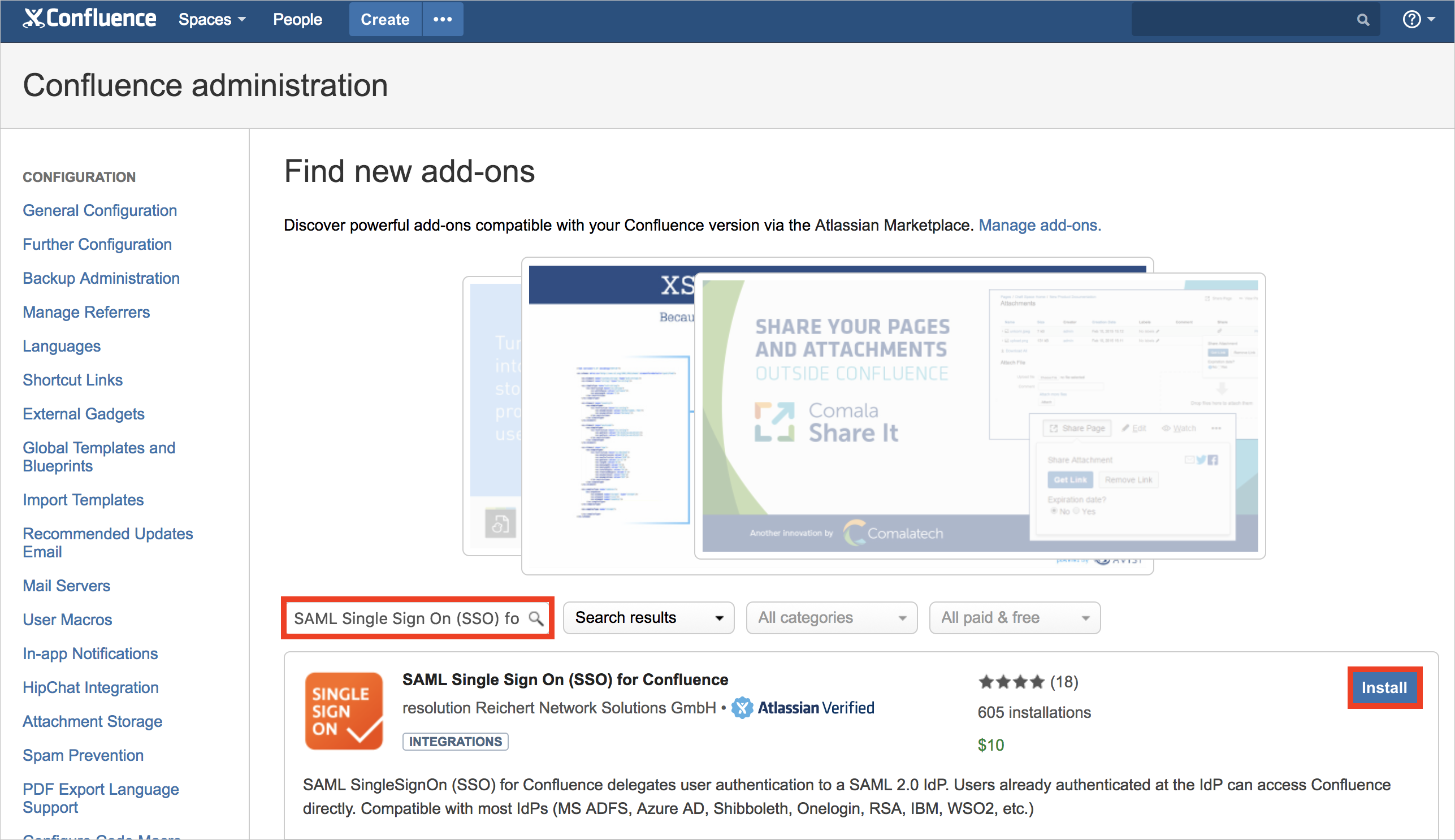
The plugin installation will start. Click Close.
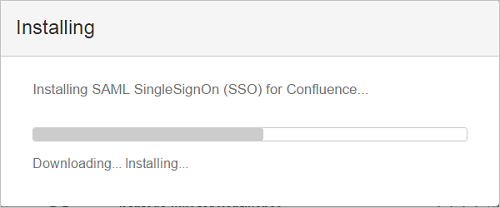
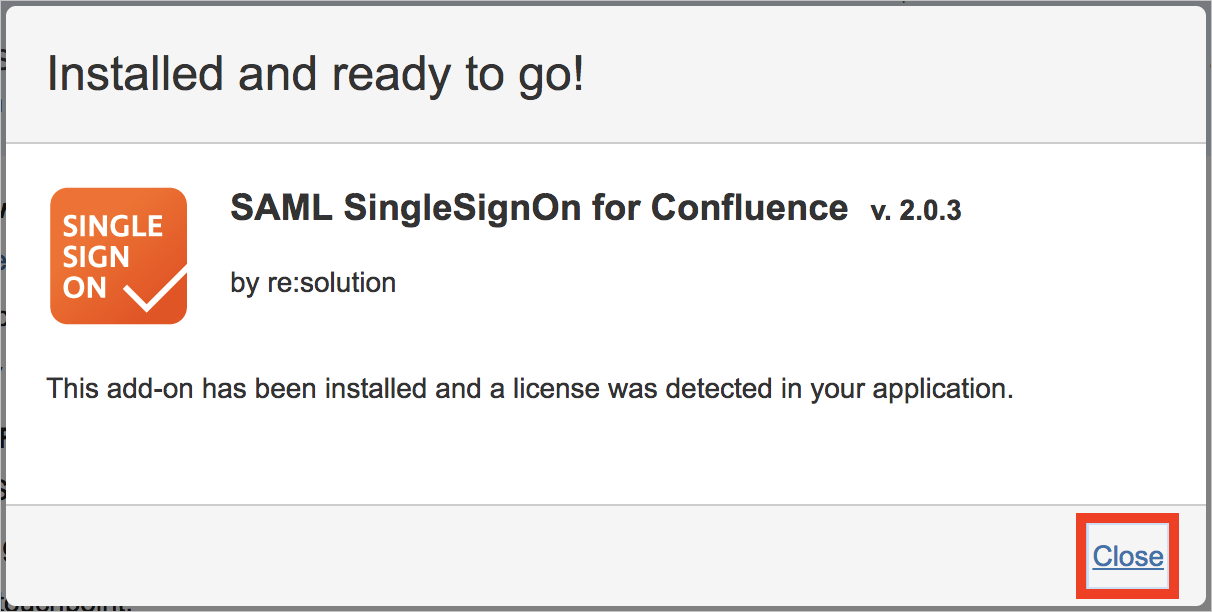
Click Manage.

Click Configure to configure the new plugin.
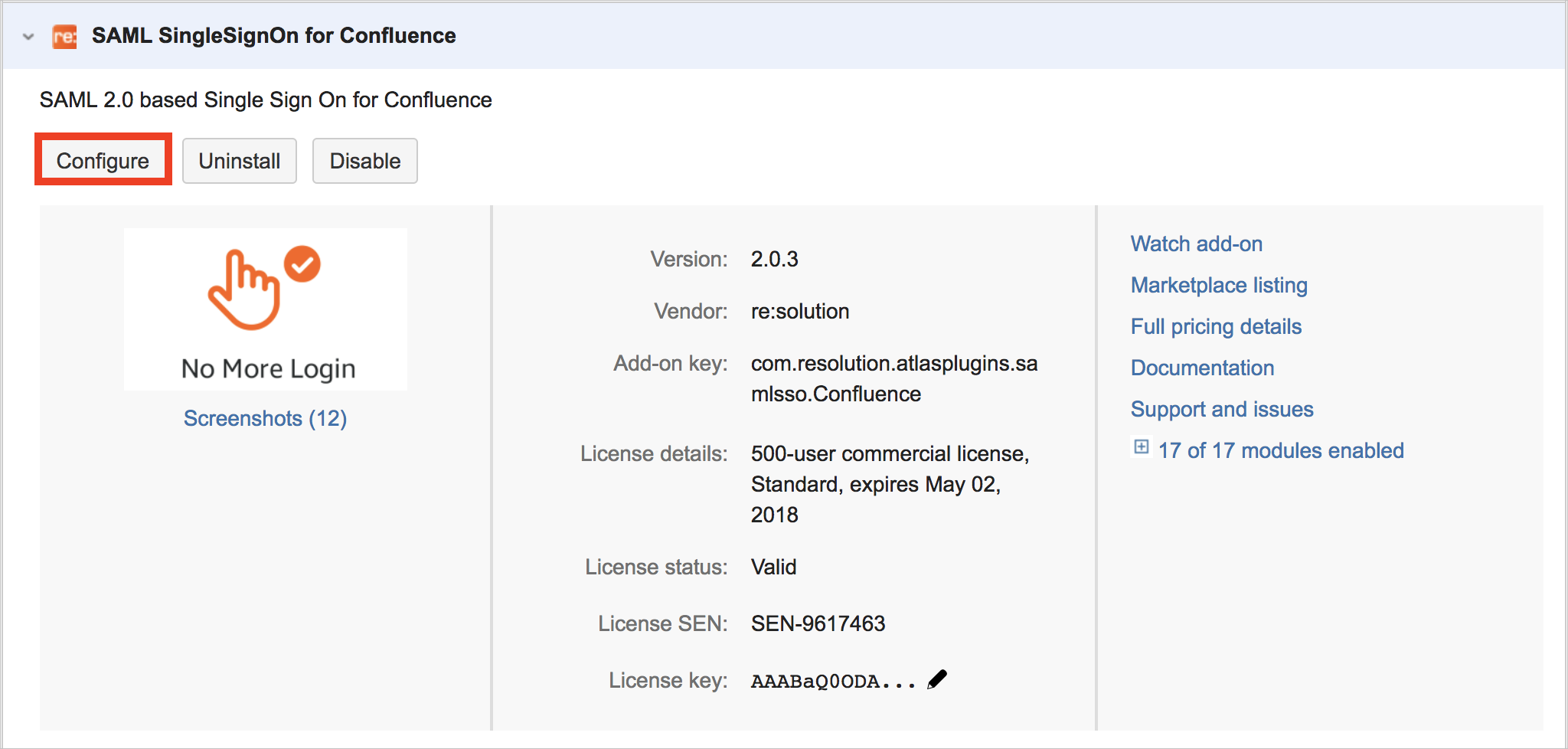
This new plugin can also be found under USERS & SECURITY tab.
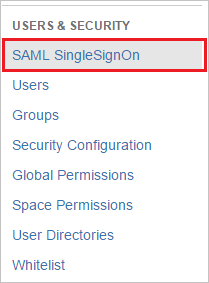
On SAML SingleSignOn Plugin Configuration page, click Add new IdP button to configure the settings of Identity Provider.
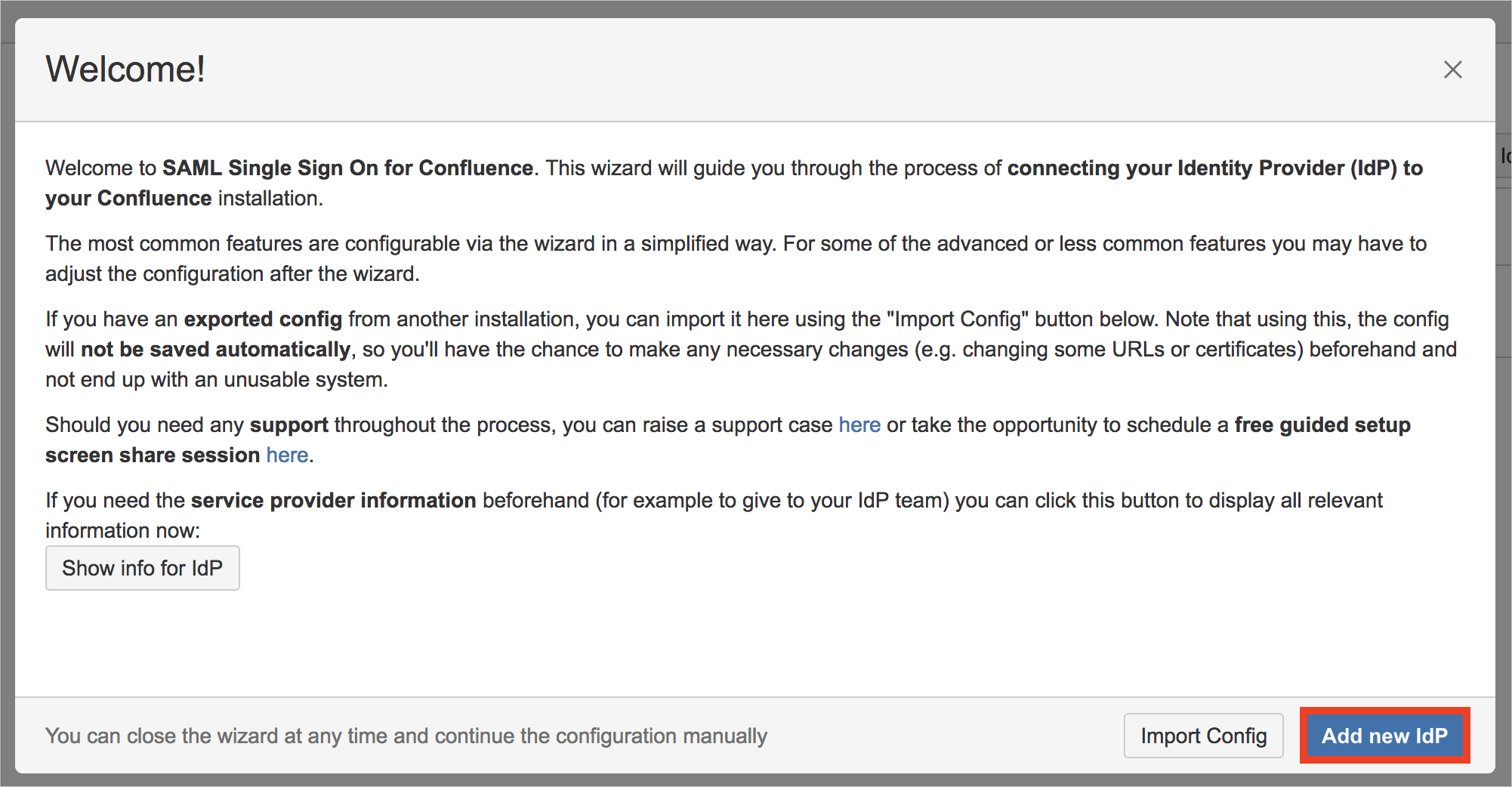
On Choose your SAML Identity Provider page, perform the following steps:
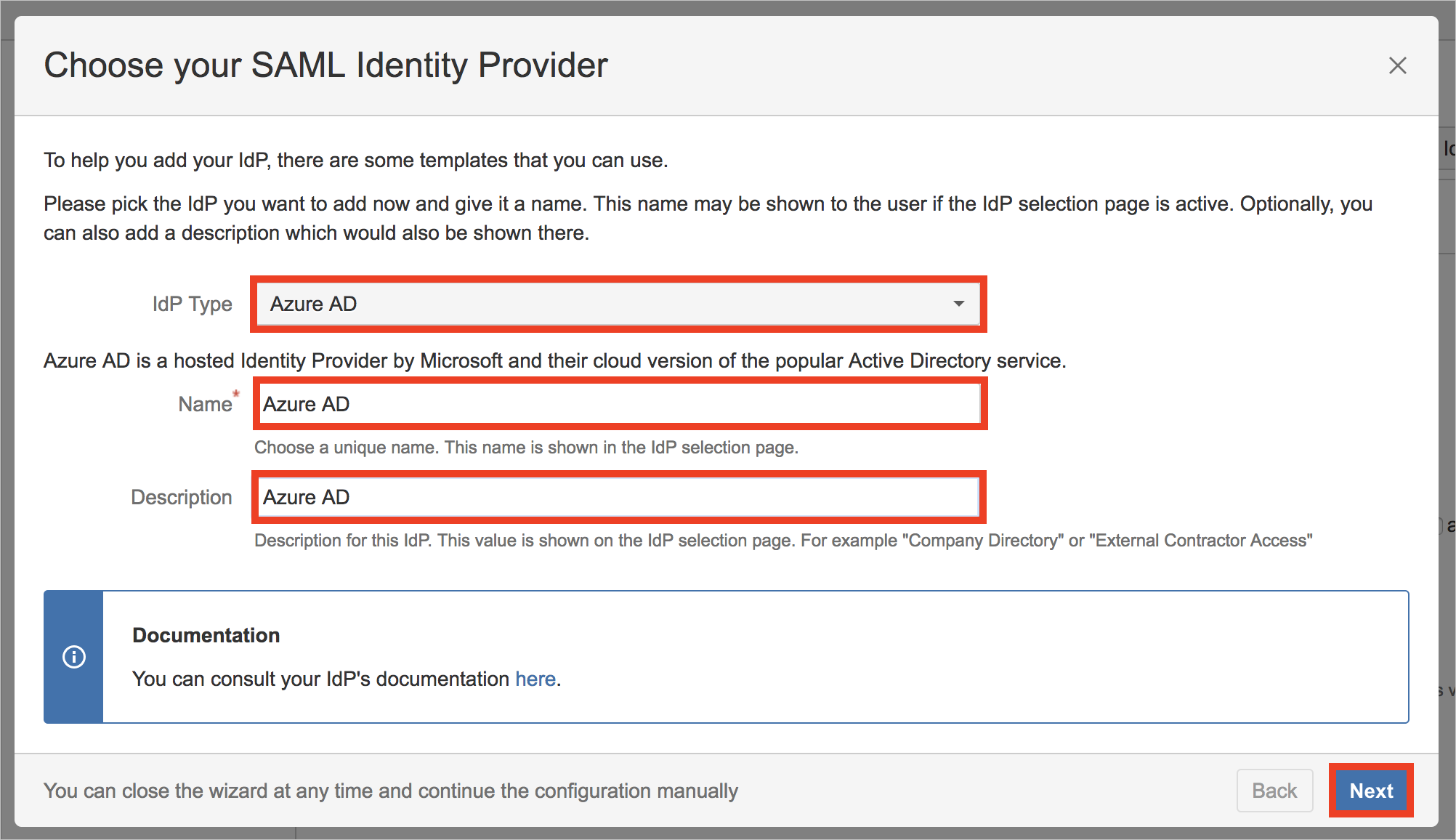
a. Set Microsoft Entra ID as the IdP type.
b. Add Name of the Identity Provider (e.g Microsoft Entra ID).
c. Add Description of the Identity Provider (e.g Microsoft Entra ID).
d. Click Next.
On Identity provider configuration page, click Next button.
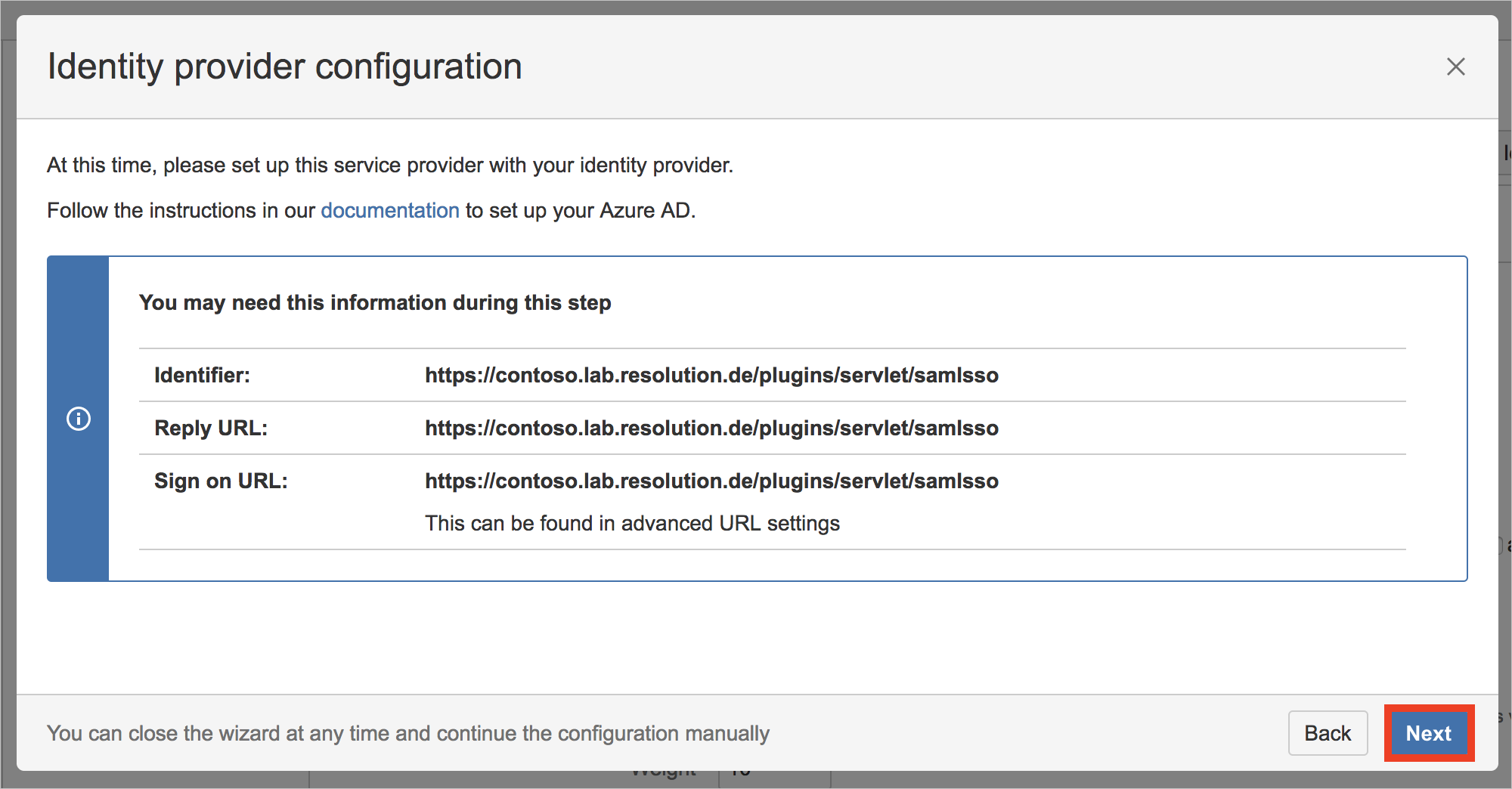
On Import SAML IdP Metadata page, perform the following steps:
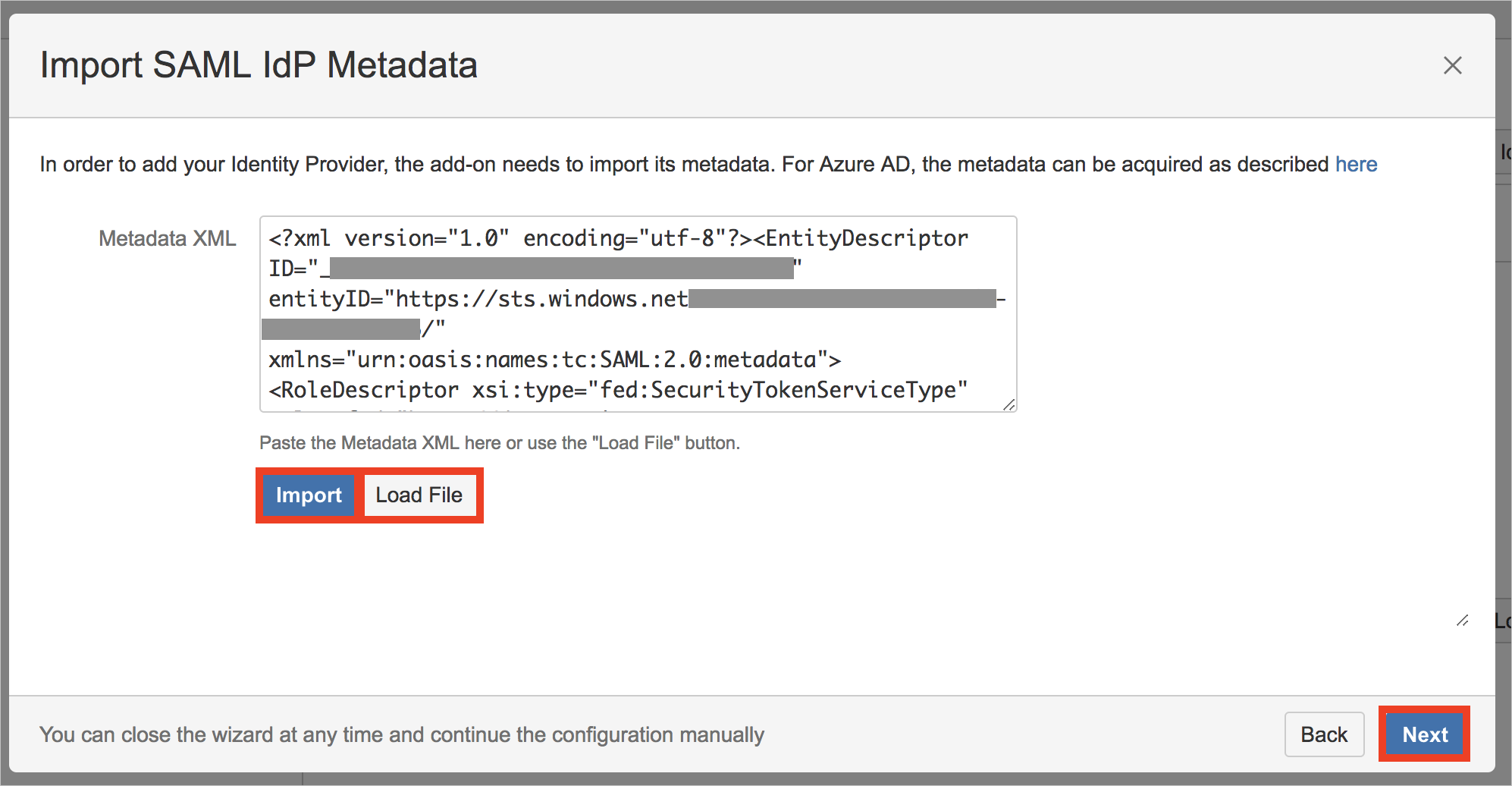
a. Click Load File button and pick Metadata XML file you downloaded in Step 5.
b. Click Import button.
c. Wait briefly until import succeeds.
d. Click Next button.
On User ID attribute and transformation page, click Next button.
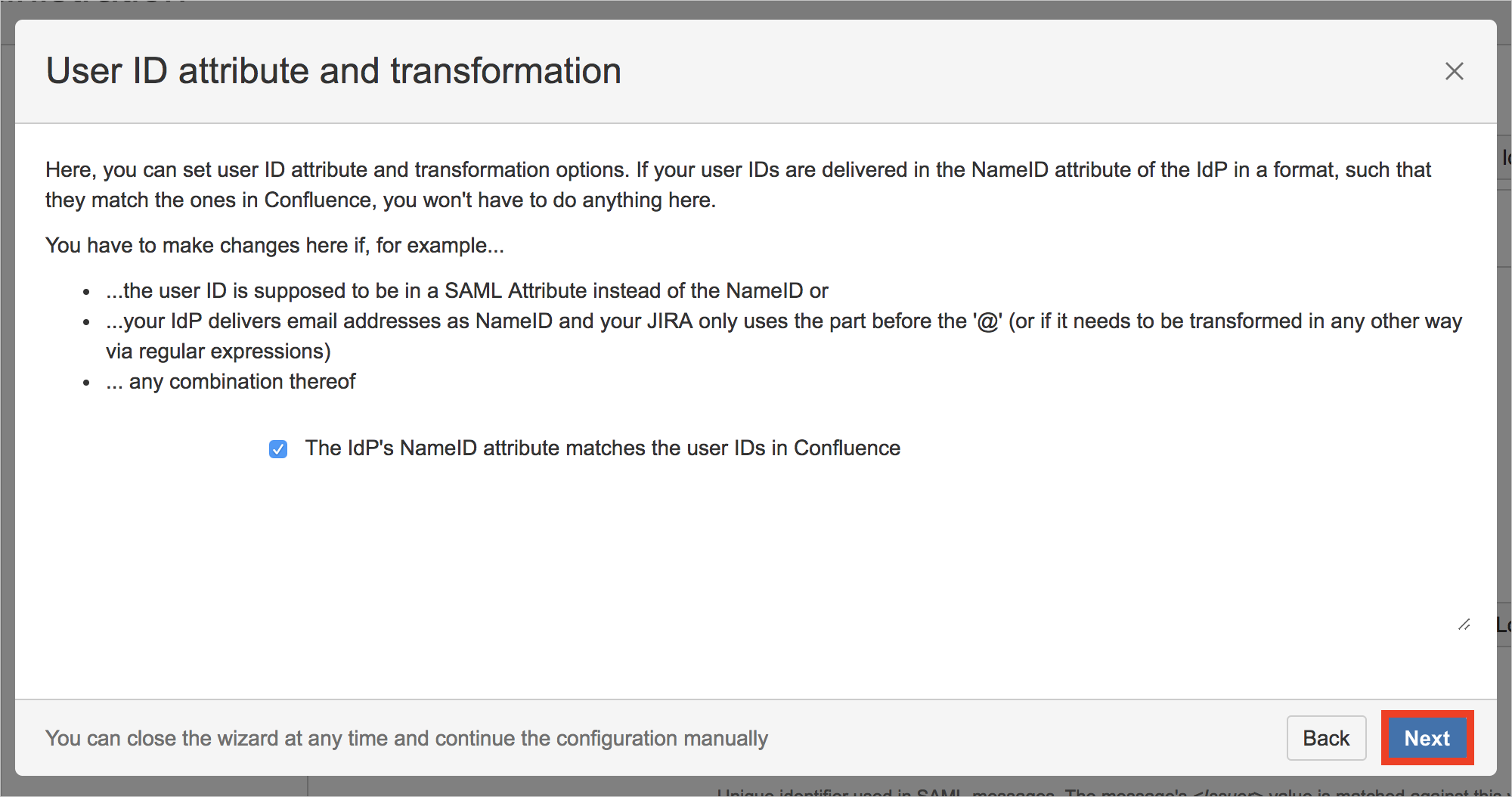
On User creation and update page, click Save & Next to save settings.
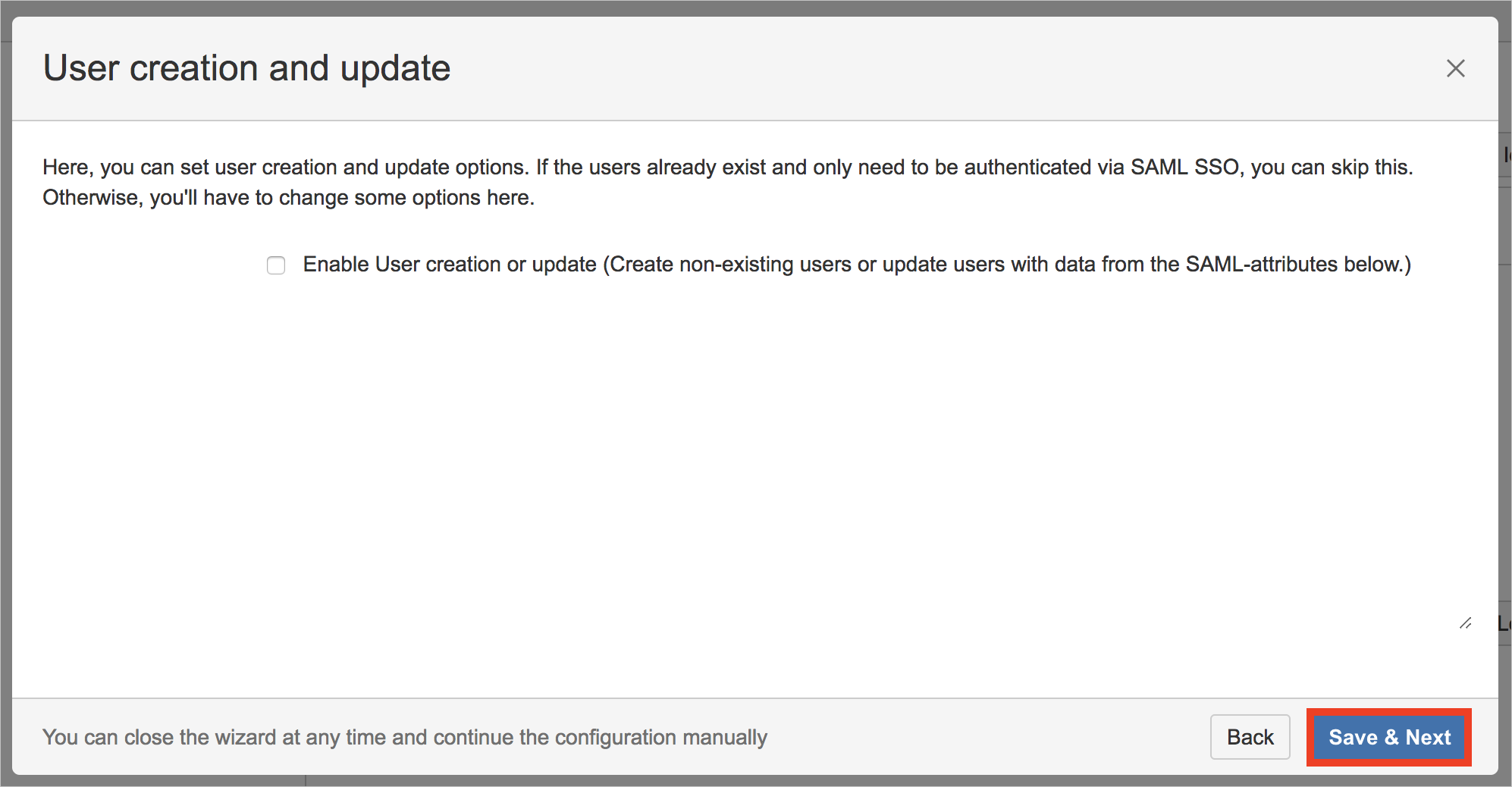
On Test your settings page, click Skip test & configure manually to skip the user test for now. This will be performed in the next section and requires some settings in Azure portal.
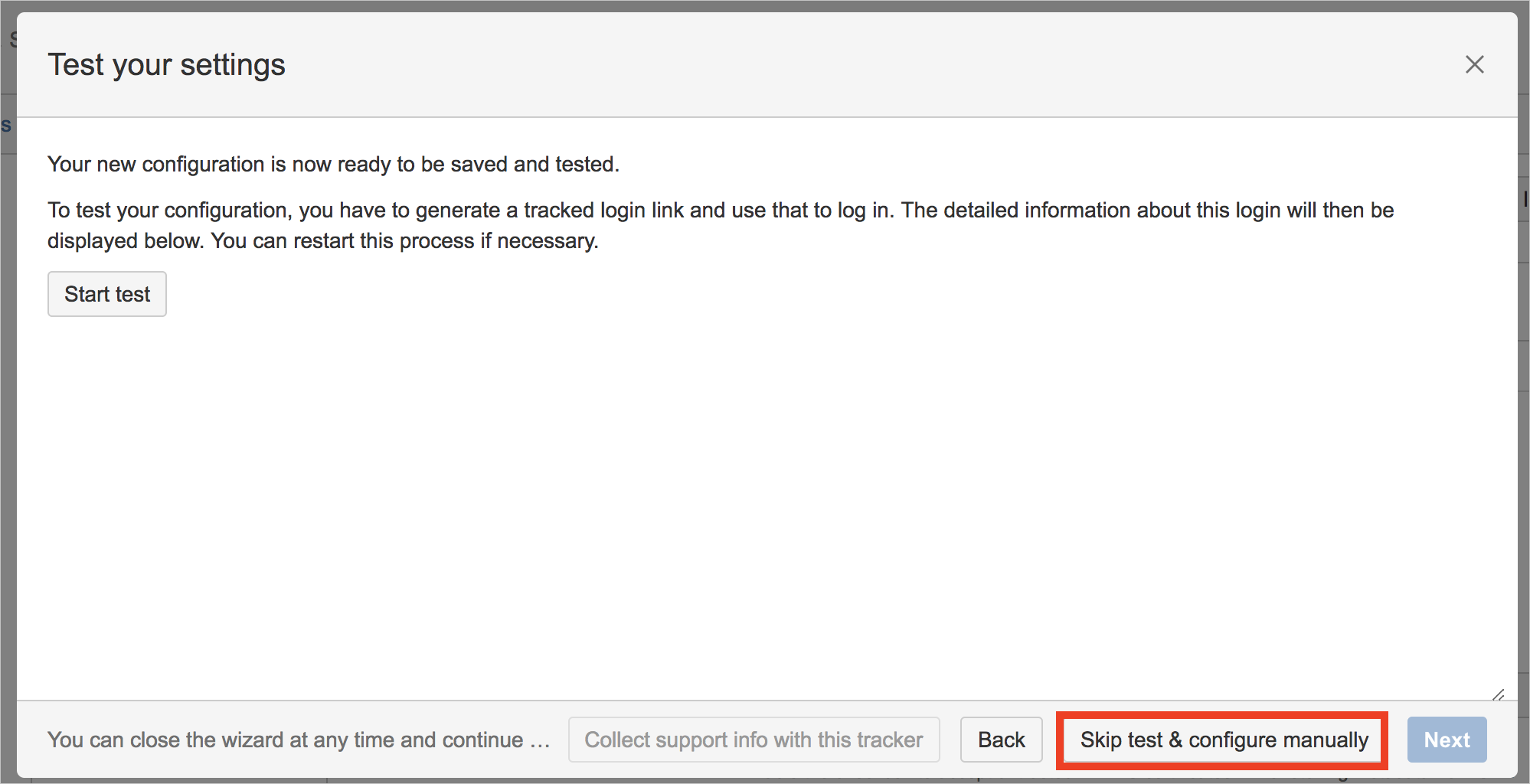
In the appearing dialog reading Skipping the test means..., click OK.

Create SAML SSO for Confluence by resolution GmbH test user
To enable Microsoft Entra users to log in to SAML SSO for Confluence by resolution GmbH, they must be provisioned into SAML SSO for Confluence by resolution GmbH.
In SAML SSO for Confluence by resolution GmbH, provisioning is a manual task.
To provision a user account, perform the following steps:
Log in to your SAML SSO for Confluence by resolution GmbH company site as an administrator.
Hover on cog and click the User management.
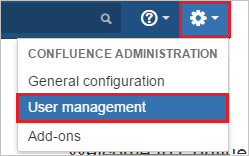
Under Users section, click Add users tab. On the “Add a User” dialog page, perform the following steps:
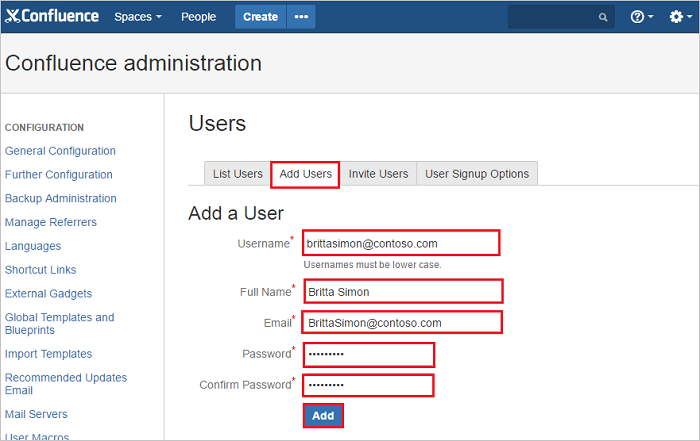
a. In the Username textbox, type the email of user like Britta Simon.
b. In the Full Name textbox, type the full name of user like Britta Simon.
c. In the Email textbox, type the email address of user like Brittasimon@contoso.com.
d. In the Password textbox, type the password for Britta Simon.
e. Click Confirm Password reenter the password.
f. Click Add button.
Test SSO
In this section, you test your Microsoft Entra single sign-on configuration with following options.
SP initiated:
Click on Test this application, this will redirect to SAML SSO for Confluence by resolution GmbH Sign on URL where you can initiate the login flow.
Go to SAML SSO for Confluence by resolution GmbH Sign-on URL directly and initiate the login flow from there.
IDP initiated:
- Click on Test this application, and you should be automatically signed in to the SAML SSO for Confluence by resolution GmbH for which you set up the SSO
You can also use Microsoft My Apps to test the application in any mode. When you click the SAML SSO for Confluence by resolution GmbH tile in the My Apps, if configured in SP mode you would be redirected to the application sign-on page for initiating the login flow and if configured in IDP mode, you should be automatically signed in to the SAML SSO for Confluence by resolution GmbH for which you set up the SSO. For more information about the My Apps, see Introduction to the My Apps.
Next steps
Once you configure SAML SSO for Confluence by resolution GmbH you can enforce session control, which protects exfiltration and infiltration of your organization’s sensitive data in real time. Session control extends from Conditional Access. Learn how to enforce session control with Microsoft Defender for Cloud Apps.
Feedback
Coming soon: Throughout 2024 we will be phasing out GitHub Issues as the feedback mechanism for content and replacing it with a new feedback system. For more information see: https://aka.ms/ContentUserFeedback.
Submit and view feedback for